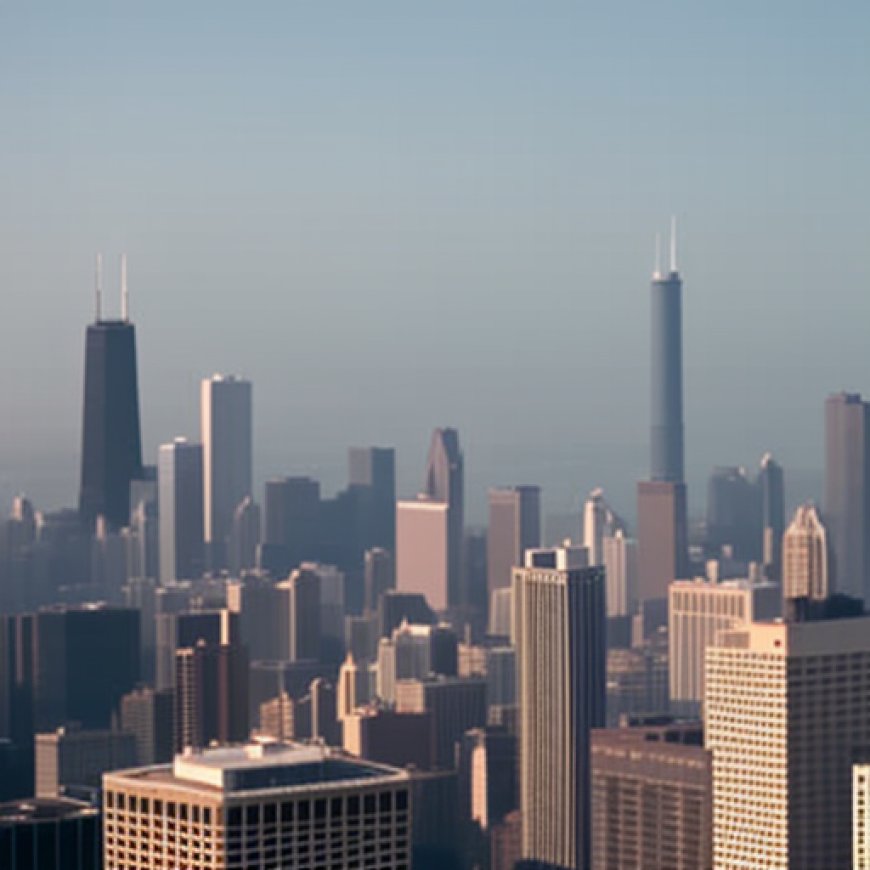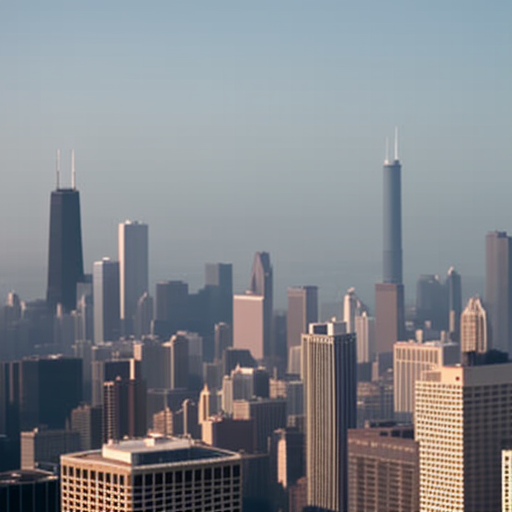Chicago ranked 2nd for worst air pollution in 2023 among major US cities, global report says
Chicago ranked 2nd in U.S. for worst air pollution, 2023 report says Chicago Tribune


Chicago’s Air Pollution Exceeds Global Guidelines, Ranking Second in the US
Chicago ranked second among major U.S. cities with the worst air pollution in 2023, its average annual concentration of dangerous fine particulate matter almost three times global guidelines, according to a recent report. Even as national standards have tightened, pollution levels in the city still surpassed old regulations.
At one point last summer, Chicago had the poorest air quality recorded among 95 cities in the world. Experts say a major recurring issue and leading cause was pollutants carried by winds across borders and contaminating air elsewhere — such as smoke from forest fires in the Canadian province of Quebec, which blew into Chicago and other U.S. cities.
Impact on Sustainable Development Goals (SDGs)
- SDG 3: Good Health and Well-being – The high levels of air pollution in Chicago pose a significant threat to public health, increasing the risk of respiratory diseases and other health issues.
- SDG 11: Sustainable Cities and Communities – Chicago’s poor air quality highlights the need for sustainable urban planning and policies to reduce pollution levels and create healthier living environments.
- SDG 13: Climate Action – The increase in wildfires, exacerbated by climate change, contributes to air pollution and highlights the urgent need for global action to mitigate climate change and its impacts.
Causes of Air Pollution in Chicago
“Wildfires in Canada devastated air quality, not only in Canada itself,” said Frank Hammes, global CEO of the Swiss air quality technology company IQAir. “But (they) caused a hazardous level of air quality in the United States, where multiple cities in the Midwest and Northeast saw significantly increased levels of polluted air.”

According to the U.S. EPA’s Region 5 office — which includes Illinois, Ohio, Indiana, Wisconsin, Michigan, Minnesota and 35 tribal nations — the wildfire smoke that this portion of the country experienced in 2023 was unprecedented.
Efforts to Address Air Pollution
Experts and advocates say that reducing PM2.5 should start by addressing it at one of its primary sources: fossil fuel burning.
On Wednesday, the Biden administration and the U.S. EPA announced new emissions standards for passenger vehicles to reduce greenhouse gases and air pollutants such as PM2.5.
Early wildfire detection and response systems are crucial to reducing air pollution. Washington state, for example, has installed a network of AI-assisted cameras in remote areas to detect wildfires and proactively control them.
Increasing public interest and knowledge can also help people make daily choices to protect themselves. Schools and libraries can participate in the Air Quality Flag Program, raising a colored flag according to how clean or polluted the air is on a given day.
Conclusion
The high levels of air pollution in Chicago highlight the urgent need for action to address this issue. By implementing measures to reduce PM2.5 emissions, improving early wildfire detection systems, and increasing public awareness, progress can be made towards achieving the Sustainable Development Goals and creating a healthier and more sustainable future for Chicago and the Midwest
SDGs, Targets, and Indicators
1. Which SDGs are addressed or connected to the issues highlighted in the article?
- SDG 3: Good Health and Well-being
- SDG 11: Sustainable Cities and Communities
- SDG 13: Climate Action
- SDG 15: Life on Land
2. What specific targets under those SDGs can be identified based on the article’s content?
- SDG 3.9: By 2030, substantially reduce the number of deaths and illnesses from hazardous chemicals and air, water, and soil pollution and contamination.
- SDG 11.6: By 2030, reduce the adverse per capita environmental impact of cities, including by paying special attention to air quality and municipal and other waste management.
- SDG 13.1: Strengthen resilience and adaptive capacity to climate-related hazards and natural disasters in all countries.
- SDG 15.1: By 2020, ensure the conservation, restoration, and sustainable use of terrestrial and inland freshwater ecosystems and their services, in particular forests, wetlands, mountains, and drylands, in line with obligations under international agreements.
3. Are there any indicators mentioned or implied in the article that can be used to measure progress towards the identified targets?
- Annual concentration of small particulate matter (PM2.5) per cubic meter of air.
- Average PM2.5 levels in specific months.
- Comparison of PM2.5 levels with global guidelines and national air quality standards.
- Number of days with poor air quality.
- Number of premature deaths related to air pollution.
Table: SDGs, Targets, and Indicators
| SDGs | Targets | Indicators |
|---|---|---|
| SDG 3: Good Health and Well-being | 3.9: By 2030, substantially reduce the number of deaths and illnesses from hazardous chemicals and air, water, and soil pollution and contamination. | – Number of premature deaths related to air pollution. – Average PM2.5 levels in specific months. |
| SDG 11: Sustainable Cities and Communities | 11.6: By 2030, reduce the adverse per capita environmental impact of cities, including by paying special attention to air quality and municipal and other waste management. | – Annual concentration of small particulate matter (PM2.5) per cubic meter of air. – Comparison of PM2.5 levels with global guidelines and national air quality standards. – Number of days with poor air quality. |
| SDG 13: Climate Action | 13.1: Strengthen resilience and adaptive capacity to climate-related hazards and natural disasters in all countries. | – Comparison of PM2.5 levels during wildfire events. – Assessment of the impact of climate change on wildfire severity and frequency. |
| SDG 15: Life on Land | 15.1: By 2020, ensure the conservation, restoration, and sustainable use of terrestrial and inland freshwater ecosystems and their services, in particular forests, wetlands, mountains, and drylands, in line with obligations under international agreements. | – Assessment of the impact of wildfires on terrestrial ecosystems and air quality. – Evaluation of measures taken to prevent and control wildfires. |
Behold! This splendid article springs forth from the wellspring of knowledge, shaped by a wondrous proprietary AI technology that delved into a vast ocean of data, illuminating the path towards the Sustainable Development Goals. Remember that all rights are reserved by SDG Investors LLC, empowering us to champion progress together.
Source: chicagotribune.com

Join us, as fellow seekers of change, on a transformative journey at https://sdgtalks.ai/welcome, where you can become a member and actively contribute to shaping a brighter future.







